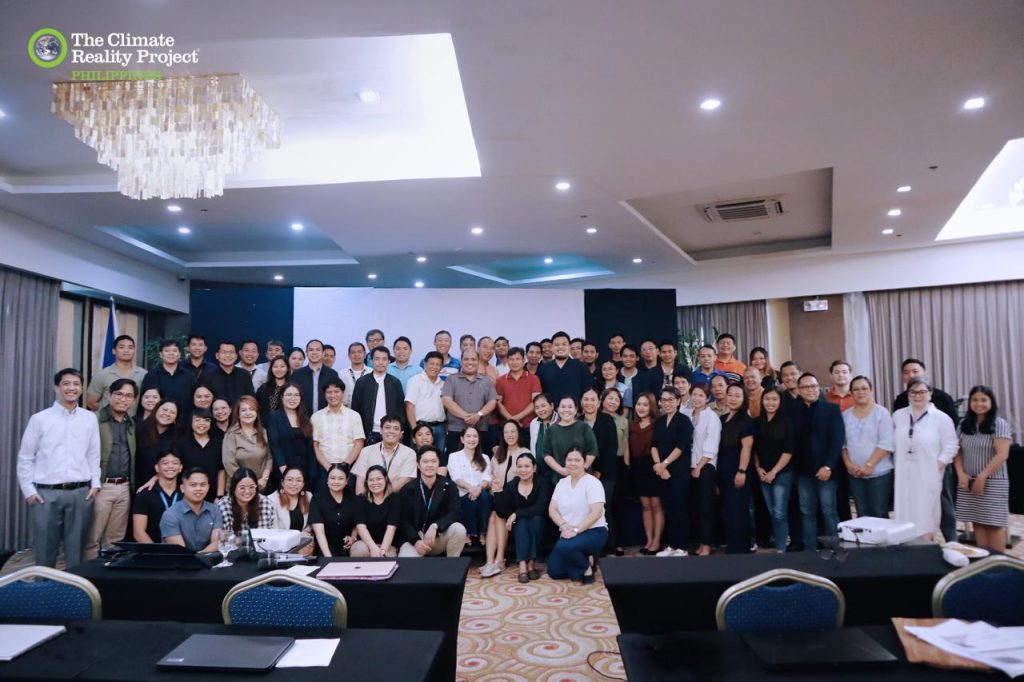“We are in the process of reviewing the [GEOP] policies and guidelines and trying to reconcile issues to have a harmonized implementation of the program. We will be hearing your suggestions on how to improve GEOP. It is important to voice out your concerns about the program,” Assistant Secretary Mylene Capongcol of the Department of Energy (DOE) said.
Over two years since its launch, GEOP has demonstrably reduced electricity costs for participating businesses and other entities, while also accelerating their progress towards achieving their sustainability goals.
Even so, GEOP has seen only a minimal uptake in participation due to the lack of public awareness of the program, as highlighted by the RE Energize PH Survey presented by Ian Soqueño, the Energy Program Lead of Climate Reality Philippines.

“There is little to no awareness about GEOP. It was only through our communication with them that they knew about it. Prior to that, they didn’t know what GEOP was or what the program was about,” he said.
The Climate Reality Philippines identified additional challenges that hinder businesses to participate in GEOP. They often struggle to meet the 100 kWh minimum peak demand threshold required for GEOP participation. Additionally, misconceptions persist regarding a complex registration process and concerns about power reliability with renewable energy sources.
Flores shared the Philippine IINO Corporation’s experience with GEOP, dispelling these misconceptions and inspiring other businesses to consider GEOP.
“[We] just provided my renewable energy supplier the necessary information, then after two to three weeks, they sent back all the documents for signature. After that, we just waited for our schedule to switch,” he shared about the process. “Prior to and after the switching to renewable energy through GEOP, we never encountered reliability issues with the power supply. There were no interruptions in our electricity with GEOP,” Flores added.
ACEN Corporation, a renewable energy supplier in GEOP, also urged distribution utilities to provide potential GEOP switchers with free access to their 12-month load profile data. This mirrors the approach currently used for customers of Retail Competition Open Access (RCOA), an energy mechanism allowing contestable customers with more than 500 kWh peak demand to choose their retail electricity supplier. This request stems from reports that some distribution utilities are charging fees for GEOP consumers to access their load profile data.
Another concern about GEOP is the limited number of registered renewable energy suppliers in the program. There are currently only 18 suppliers under GEOP, with some renewable energy suppliers reportedly hesitant to join the program because they could not guarantee the 100% renewable energy supply and replacement power requirement as a supplier.
Climate Reality Philippines also welcomed DOE’s consideration to pooling in supply from various RE suppliers in order to address the growing demand in GEOP. Above all, increasing the country’s capacity for renewable energy through investments and infrastructure projects is paramount to supplying more entities with 100% renewable energy.
Potential shifts in the GEOP implementation
DOE is committed to making GEOP more accessible for consumers and suppliers. To achieve this, the department intends to harmonize the registration process of GEOP with RCOA, as well as explore rules on aggregation to allow multiple consumers to combine their energy needs to meet the current 100 kWh minimum peak demand threshold.
Assistant Secretary Capongcol highlighted GEOP’s potential as a driver for renewable energy development. The growing demand for 100% renewable energy through GEOP signals to investors and generation companies that it’s high time to fast-track renewable energy projects in the Philippines.
This year, Climate Reality Philippines is also set to conduct a survey on GEOP bearing insights from renewable energy suppliers and a research study to report the socioeconomic benefits of the program thus far.

